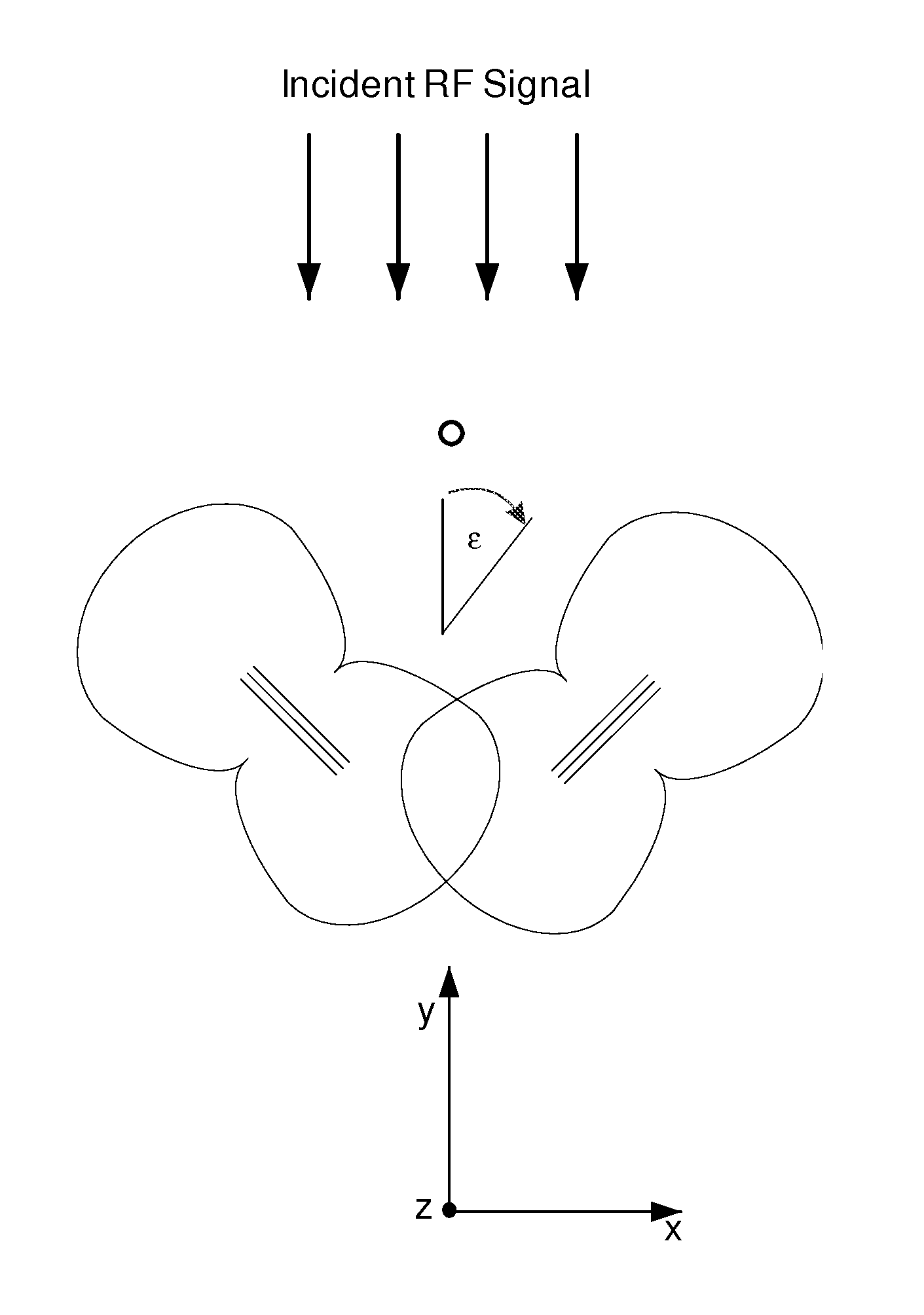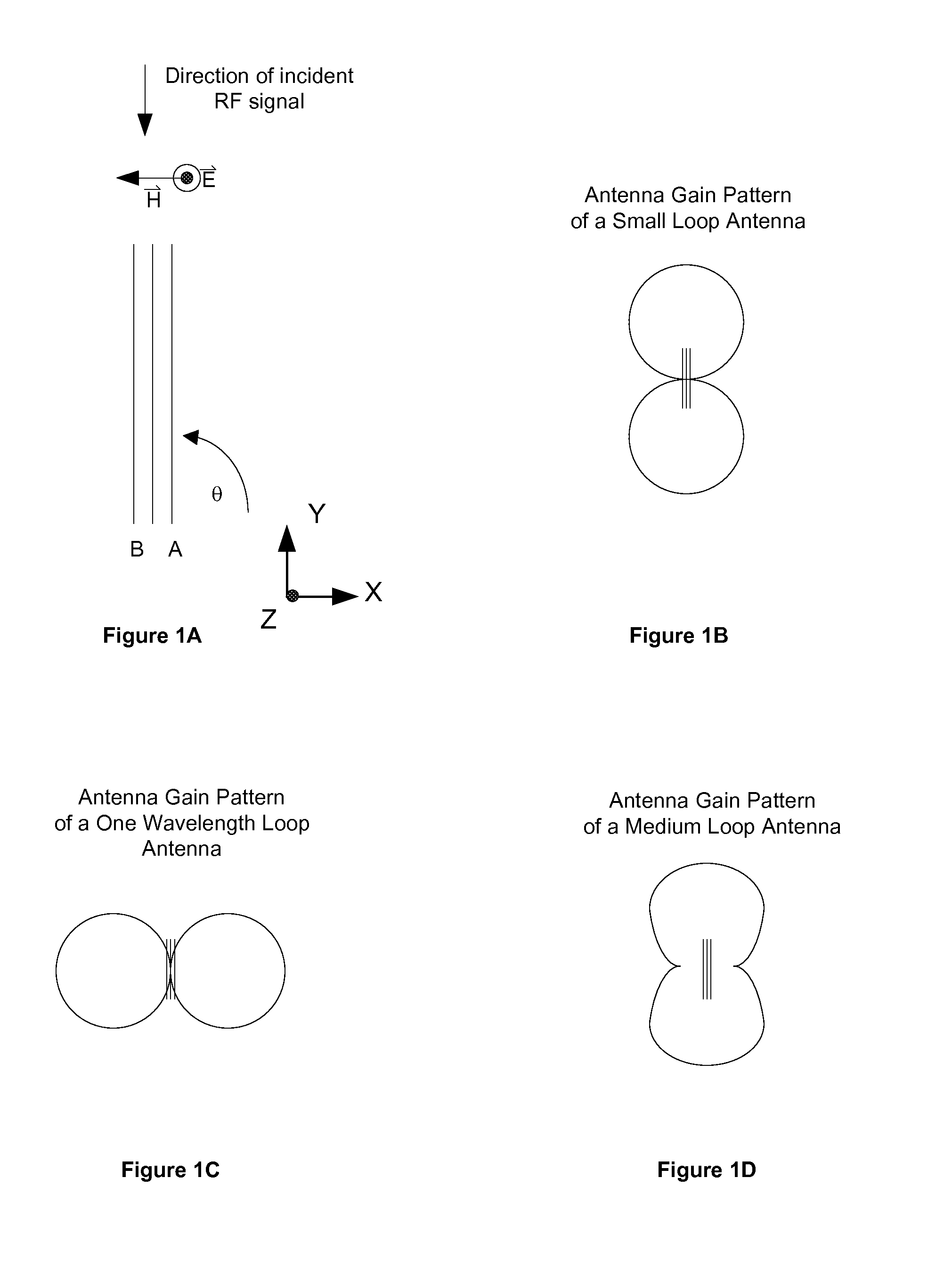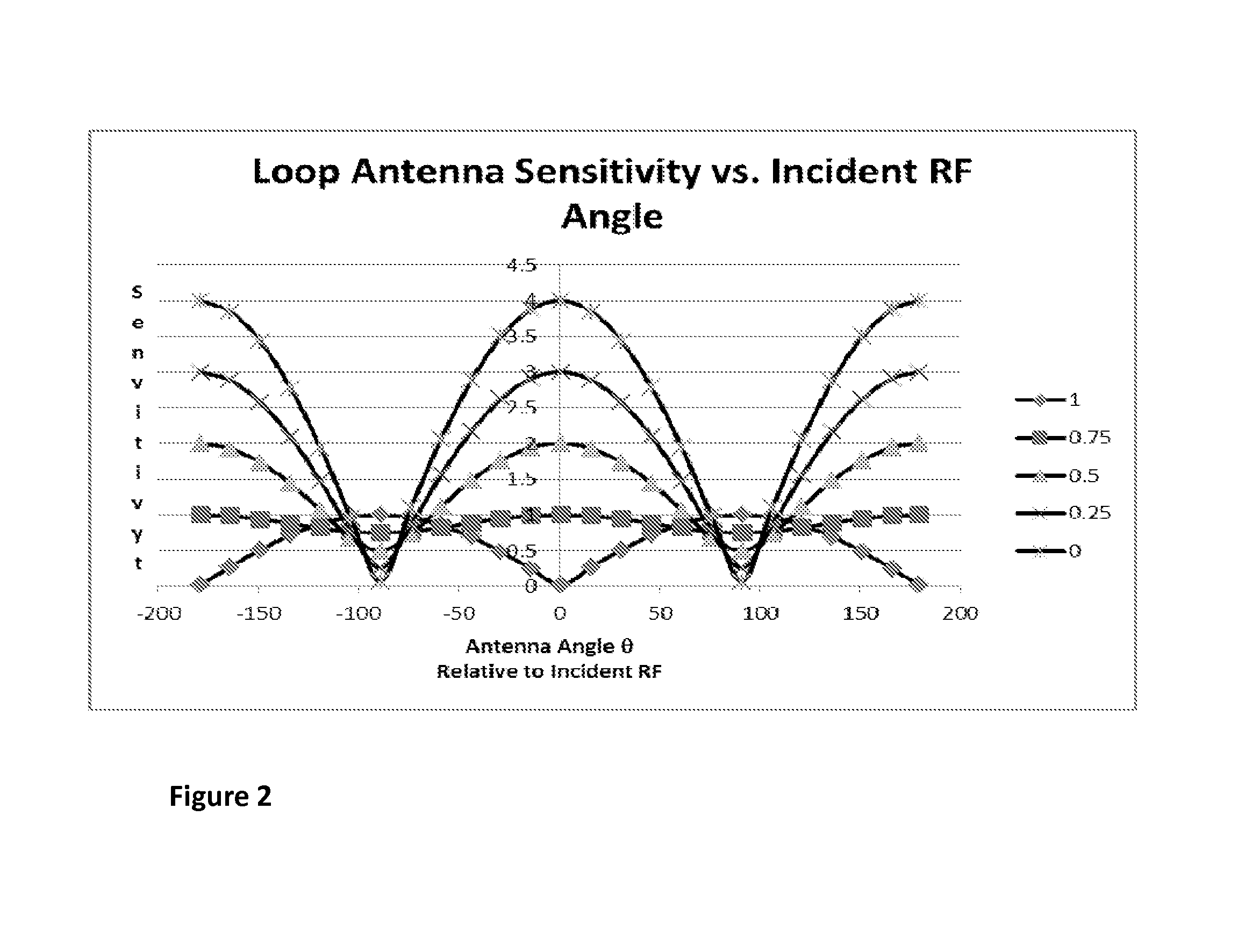Directional radio signal detection apparatus using a sense and loop antennas
- Summary
- Abstract
- Description
- Claims
- Application Information
AI Technical Summary
Benefits of technology
Problems solved by technology
Method used
Image
Examples
Embodiment Construction
[0027]The present disclosure consists of a non-directional antenna such as a dipole, helical or monopole antenna referred as the sense antenna and two or more loop antennas. Using the loop antennas to absorb the energy, a non-ambiguous antenna response on the sense antenna can be created.
[0028]A dipole, monopole or helical antenna oriented in the z direction has a gain pattern which is uniform in the x and y axis. Thus a signal coming from any direction in the x-y plane will result in the same signal level. A loop antenna is directional and has symmetrical gain pattern.
[0029]FIG. 1A shows a loop antenna wound in the Y and Z plane with Theta (θ), the angle of the loop antenna relative to the incident RF. The bean pattern of a small loop antenna is shown in FIG. 1B and can be characterized by the equations:
0°t)
180°t)
[0030]FIG. 1C shows the beam pattern of a one wavelength antenna and its response can be characterized by the equation:
|cosθ|cos(ωt)
Note that the beam pattern of a small v...
PUM
 Login to View More
Login to View More Abstract
Description
Claims
Application Information
 Login to View More
Login to View More - R&D
- Intellectual Property
- Life Sciences
- Materials
- Tech Scout
- Unparalleled Data Quality
- Higher Quality Content
- 60% Fewer Hallucinations
Browse by: Latest US Patents, China's latest patents, Technical Efficacy Thesaurus, Application Domain, Technology Topic, Popular Technical Reports.
© 2025 PatSnap. All rights reserved.Legal|Privacy policy|Modern Slavery Act Transparency Statement|Sitemap|About US| Contact US: help@patsnap.com



